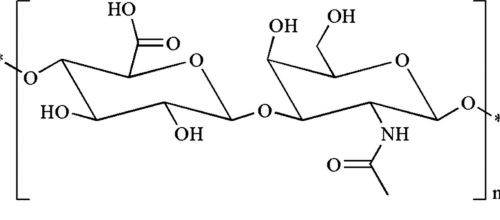
Hailed as a “liquid miracle” in the skincare world, Hyaluronic Acid (HA) has become a staple in many people’s skincare routines in recent years. Despite its excellent performance as a moisturizer, improper use can significantly reduce its effectiveness and cause skin problems.
What is Hyaluronic Acid?
Hyaluronic Acid is a naturally occurring polysaccharide found in human skin, connective tissue, and eyes, known for its amazing moisturizing power. It can absorb 1000 times its weight in water, making it an exceptionally effective evaporator. For this reason, HA is widely used in skin care products to maintain moisture in the skin and prevent dryness and blemishes.
Key Benefits of Hyaluronic Acid
Powerful hydration: Hyaluronic acid absorbs and retains moisture, leaving skin looking plump and healthy.
Improves texture: By increasing hydration, HA helps improve skin texture, making it smooth and supple.
Reduces fine lines and wrinkles: Effective moisturizing helps temporarily reduce fine lines and wrinkles, giving the skin a younger appearance.
Promotes wound healing: Sodium hyaluronate promotes wound healing and is commonly used in medical and cosmetic scar care.
The benefits of hyaluronic acid have been described in detail in previous articles. If you are interested, you can take 2 minutes to read this article:
10 Proven Benefits of Hyaluronic Acid

Fig 1. HA chemical structure
Common mistakes when using Hyaluronic Acid
Mistake 1: Applying on dry skin
Hyaluronic acid works best in a humid environment. When applied to dry skin, it can draw moisture from deeper areas of the skin, exacerbating dryness. The correct approach is to use HA products when your skin is slightly damp, such as after washing and conditioning. This helps to lock in more water, increasing the moisture content.
Mistake 2: Ignoring occlusive moisturizer
While hyaluronic acid can absorb moisture, it can’t lock in. Therefore, applying an occlusive moisturizer (such as a cream) after using HA products is important to prevent water loss. This step is especially important in areas where it’s a dry place. If you don’t take moisturizing steps afterward, your skin can become dry and tight.
Mistake 3: Using too much concentrate
High levels of hyaluronic acid are not necessarily good for everyone. Choose a lightweight product and observe how your skin reacts the first time you use it. Too much of them can cause nausea or vomiting. For most people, a moderate concentration is sufficient to provide excellent hydration.
Mistake 4: Solid reactants are mixed
Although hyaluronic acid tends to be gentle on the skin, it can irritate when combined with other strong active ingredients (such as retinol or alpha hydroxy acids) It is best used at different times time using multiple functional components. For example, use sodium hyaluronate in the morning and retinol at night.
Mistake 5: Ignoring skin reactions
Everyone’s skin reacts differently. Even gentle ingredients like hyaluronic acid can irritate. If you experience redness, irritation, or other discomfort, after using HA products, stop using them immediately and consult a dermatologist. Slowly introduce new products, especially if you have sensitive skin, and see how your skin tolerates it.
How to Use Hyaluronic Acid Correctly
Step 1: Choose the Right Item
Choose hyaluronic acid products based on your skin’s needs, such as serums, creams, or masks. Opt for milder products to see how your skin reacts when using it for the first time.
Step 2: Rinse your skin
Make sure your skin is thoroughly clean before using sodium hyaluronate products. Use a gentle cleanser to avoid damaging the skin barrier.
Step 3: Apply on damp skin
To help lock in more moisture, you should moisturize your skin. For example, apply hyaluronic acid products after washing and toning.
Step 4: Apply Occlusive Moisturizers
Follow with an occlusive moisturizer (such as a cream) to prevent moisture loss, especially in dry areas.
Step 5: Observe skin reaction
Introduce new products slowly and observe how the skin reacts. If you experience any side effects, stop using the product and consult a dermatologist.
Step 6: Combine other ingredients
Hyaluronic acid can be combined with other moisturizing agents, such as glycerin or squalane, to enhance hydration. Avoid using harsh active ingredients at the same time to avoid skin irritation.
Step 7: Proper storage
To maintain active ingredients, store hyaluronic acid products in a cool, dry place out of direct sunlight. Check the expiration date, as expired products can lose their effectiveness.
Stanford Chemicals Company (SCC) is at the forefront of developing hyaluronic acid and herbal extracts. Providing cosmetic-grade HA, food-grade HA, injection-grade HA, and medical-grad HA. For more information on these products or specific applications, please feel free to contact us to view our homepage.
Conclusion
Hyaluronic acid is a very effective skin moisturizer, but it is important to use it properly and with precautions to maximize benefits and avoid potential skin problems. By choosing the right products, using them in the right sequence, adding other moisturizing ingredients, and managing your skin’s reactions. You can fully utilize the power of sodium hyaluronate.
While hyaluronic acid has benefits, proper application is key. Hopefully, this article will help you better understand how to properly use HA products, taking your skin results to the next level.
